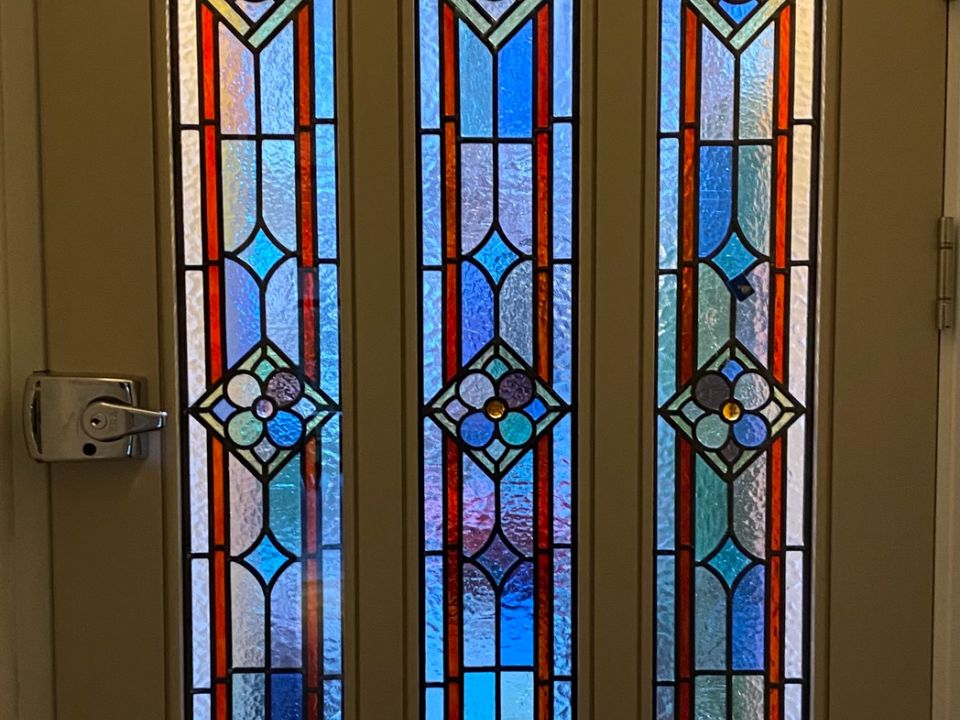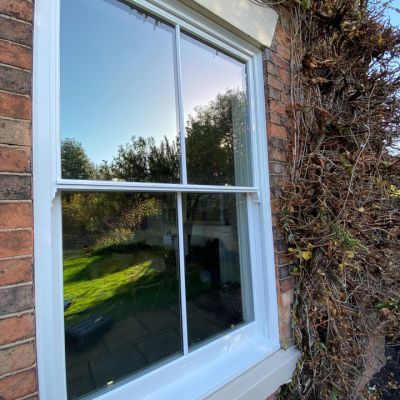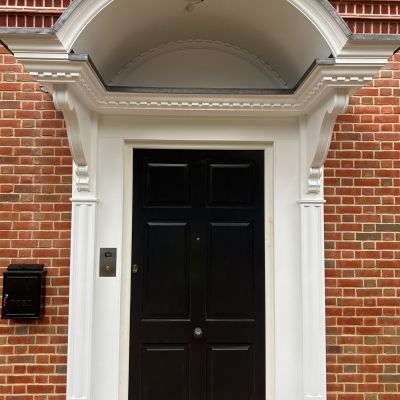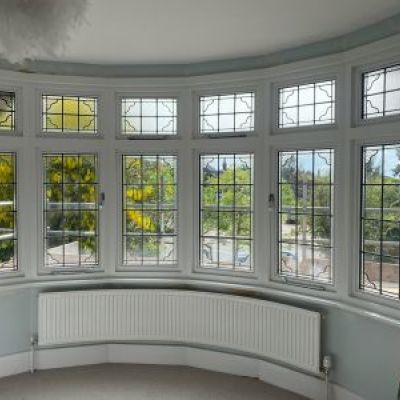The Complete Guide to a Stained Glass Front Door

We believe a front door with stained glass can transform your home’s entrance into a breathtaking focal point. Beyond its decorative appeal, stained glass filters daylight to create mood and atmosphere, and connects your property to centuries of architectural tradition. In this guide, we’ll deepen our exploration of why stained glass matters, show you how to choose styles and materials with confidence, walk through installation and protection strategies, and share practical maintenance tips. By the end, you’ll understand how to commission and care for a stained glass door that balances beauty, performance and heritage value.
Why Choose a Stained Glass Front Door?
A stained glass front door does more than add a splash of colour. It combines artistry, function and lasting appeal. From an aesthetic standpoint, coloured and textured glass refracts sunlight into vibrant patterns that shift throughout the day. In a north-facing hallway, stained glass can warm an otherwise cool light; on a sunny afternoon, it casts dancing hues onto floors and walls, creating a welcoming ambience for residents and visitors alike.
Stained glass also speaks to a rich heritage of decorative arts. In late-Victorian and Edwardian homes, intricate glass panels signified craftsmanship, status and attention to detail. Reintroducing stained glass today instantly connects your property to that tradition, reinforcing its period character and distinguishing it from more generic modern entrances. This heritage value often translates to higher kerb appeal: prospective buyers notice the unique character and artisanal quality that factory-made doors lack. A well-designed stained glass installation can therefore boost your home’s resale potential and help it stand out in a competitive market.
Moreover, stained glass enhances privacy without sacrificing light. Frosted or opalescent segments obscure direct sightlines, making them ideal for ground-level doors. Unlike solid timber or opaque panels, stained glass welcomes daylight while screening neighbours’ views. For families, this privacy-light balance is essential, creating a sense of openness without giving up security.
Styles & Patterns to Inspire Your Design
Choosing a pattern for your stained glass door begins with understanding both historic precedents and contemporary possibilities. Traditional motifs draw on centuries-old techniques and familiar shapes, while modern interpretations push the boundaries of colour, form and mixed media.
Victorian-era designs often featured floral motifs - roses, lilies and acanthus leaves - set within geometric frameworks. Leaded diamonds and rectangular grids provided structure, while small coloured jewels or bullseye accents added focal points. Georgian fanlights, perched above the door, used slender radial glazing bars to emulate sunbursts, a motif borrowed from Palladian architecture. Heraldic panels, depicting shields or family crests, offered a personalised touch in grander homes.
By contrast, Art Nouveau styles of the early 20th century favoured sinuous lines and natural forms. Vine-like tendrils, stylised dragonflies and water-lily shapes flowed across panels, with copper-foil joints tracing delicate curves. This approach suits homeowners who want a softer, organic look that integrates art glass traditions with nature-inspired imagery.
Contemporary stained glass moves even further, blending abstract shapes, bold colour blocks and new materials. Some designers integrate thin strips of stainless steel or zinc for structural contrast, while others use dichroic or iridescent glass pieces that change colour as you move. Mixed-media panels can combine fused glass elements, such as kiln-encased decorative inclusions, with traditional mouth-blown pieces, giving each door a truly one-of-a-kind quality.
As you review pattern options, consider how a design relates to your door’s framing and surrounding architecture. A busy motif may overwhelm a simple timber surround, while a minimalist geometric panel can bring modern clarity to a heritage door. When in doubt, lean toward symmetry and repetition - key principles in both historic and contemporary glass design - to ensure your door feels balanced and intentional.
Materials & Techniques Explained
Stained glass artistry relies on two main fabrication methods, lead came and copper foil, each with its own strengths. Understanding these techniques helps you make informed decisions about cost, durability and design complexity.
Lead came construction uses lengths of H-shaped lead channels to join glass pieces. After cutting each glass segment to the approved pattern, the fabricator slips the glass into the frame, soldering each intersection, and cements the panel to weatherproof and stiffen it. Lead comes is well-suited to large door panels, as the robust channels provide structural support. Repairs to come panels are straightforward: softened solder and came can be removed and replaced without disturbing the entire composition.
In contrast, the copper foil method wraps each glass edge in adhesive-backed copper tape. Pieces are then soldered together with a thin bead, creating slender joints that accommodate finer detail and tighter curves. This technique, pioneered by Tiffany Studios, allows for intricate Art Nouveau designs, tiny accent pieces and delicate tracery in fanlights. The downside is that copper-foil panels are more labour-intensive and can be less rigid over large spans, so they often require backing glass or protective glazing to maintain stability.
Glass types play a key role in appearance and light transmission. Cathedral glass is clear and vibrant, offering bold colour without patterns. Opalescent glass, developed in the early 20th century, has whitened streaks and swirls, diffusing light softly for a milky glow. Rippled and hammered textures create subtle distortions, enhancing privacy and crafting a handcrafted look. Hand-painted and kiln-fired glass allows artists to introduce shading, faces or landscapes, sealed by special enamels and heat treatment.
When specifying your panel, weigh initial costs against long-term maintenance. Lead comes are generally more economical for large, straightforward designs. Copper foil demands more skilled labour and higher solder costs, but allows unique customisation. Glass selections vary widely in price: standard cathedral or ripple textures are budget-friendly, while rare mouth-blown sheets, dichroic, or hand-painted pieces command premium rates. Discuss options with your fabricator to find the right mix of style, budget and durability for your entrance.
Installation & Protective Glazing
Once your stained glass panel arrives, proper installation and weatherproofing are essential to safeguard both glass and timber.
Our on-site fitting process begins with a precise site survey. We confirm frame dimensions and check for squareness, rot or previous modifications that may affect the fit. We then construct a secondary timber subframe - treated for moisture and sized to snugly receive the glass panel without over-tightening. Adjustable glazing blocks position the panel evenly, while elastic gasket strips cushion the edges, allowing for seasonal movement without cracking the glass.
Flexible, UV-stable sealant seals the perimeter, preventing drafts and water ingress while preserving the panel’s ability to breathe. For additional protection, clear toughened glass can be installed externally, creating a protective barrier. We leave a small ventilation gap, often a few millimetres, between the stained glass and the outer sheet. This gap prevents condensation build-up, which can accelerate lead corrosion or encourage glass souring.
Protective glazing also offers UV filtration, reducing colour fading over time. Low-iron toughened glass maximises clarity, ensuring your art glass remains the focal point. In heritage settings, we choose slim-profile secondary glazing to minimise visual impact, keeping the original door appearance intact from the street.
Care & Maintenance Tips
A little care goes a long way in preserving the brilliance of your stained glass.
Cleaning should be gentle and infrequent, perhaps once or twice a year. We recommend a damp microfibre cloth and a mild, pH-neutral cleaner. Avoid ammonia or vinegar-based solutions, which can degrade cement and solder over time. Rinse with clean water and dry gently to prevent streaks.
Inspect your panel seasonally for signs of wear. Look for hairline cracks in corners, gaps in the lead or copper joints, and dulling or blistering of the cement. If protective glazing is fitted, clear it carefully, checking seals for gaps or detritus. Loose came or foil joints can be re-soldered by a specialist before moisture infiltration causes wider damage.
Over the decades, minor adjustments may be necessary. Lead came can sag slightly under its own weight; re-cementing and re-leading can restore panel rigidity. Copper foil joints might need re-tinning if signs of oxidation appear. By addressing issues early, you avoid full-panel restoration and protect both your investment and the door’s character.
How Old English Doors Can Help with Your Stained Glass Front Door
Old English Doors specialises in heritage‑accurate solutions for stained glass front doors, offering a suite of services to guide architects, renovators, and homeowners through every stage of design, fabrication, installation, and aftercare:
- Design Consultation: We begin with an in‑home survey, sketch pattern concepts and recommend glass types - lead came or copper foil - based on your light, privacy and style requirements.
- Artisan Fabrication: In our UK workshop, skilled glassmakers cut, assemble and solder each panel. We source mouth‑blown, opalescent and textured glass, ensuring every joint and seal meets our high standards for beauty and durability.
- Professional Installation & Protective Glazing: We prepare or adapt your timber frame, fit a treated subframe for the glass panel, apply elastic gaskets and UV‑stable sealant, and install slim‑profile secondary glazing when needed for maximum protection.
- Maintenance & Aftercare: After installation, our team provides bespoke care instructions and scheduled visits for re-cementing, solder touch‑ups and sealant renewal, keeping your stained glass vibrant and fully functional for years to come.
By partnering with Old English Doors, you gain access to craftsman‑grade artistry, archival‑quality materials and comprehensive support designed to enhance your home’s entrance while delivering lasting performance.
Conclusion
A stained glass front door offers a unique blend of artistry, heritage and practical benefit. From the warm glow of coloured light to the enhancement of kerb appeal, these doors enrich your home in ways that standard panels cannot. By understanding design styles, fabrication techniques and protective measures, you can make informed choices and commission a door that delights for generations. Let Old English Doors guide you through every step, from initial sketches to final installation, ensuring your entrance remains as beautiful and enduring as the traditions that inspire it.
What’s the difference between lead came and copper foil?
Install clear toughened secondary glazing with a small ventilation gap and UV-stable sealant to shield your panel from rain, wind and sun damage.
Absolutely, we collaborate on bespoke patterns, glass types and finishes to suit your home’s period charm and practical needs.


